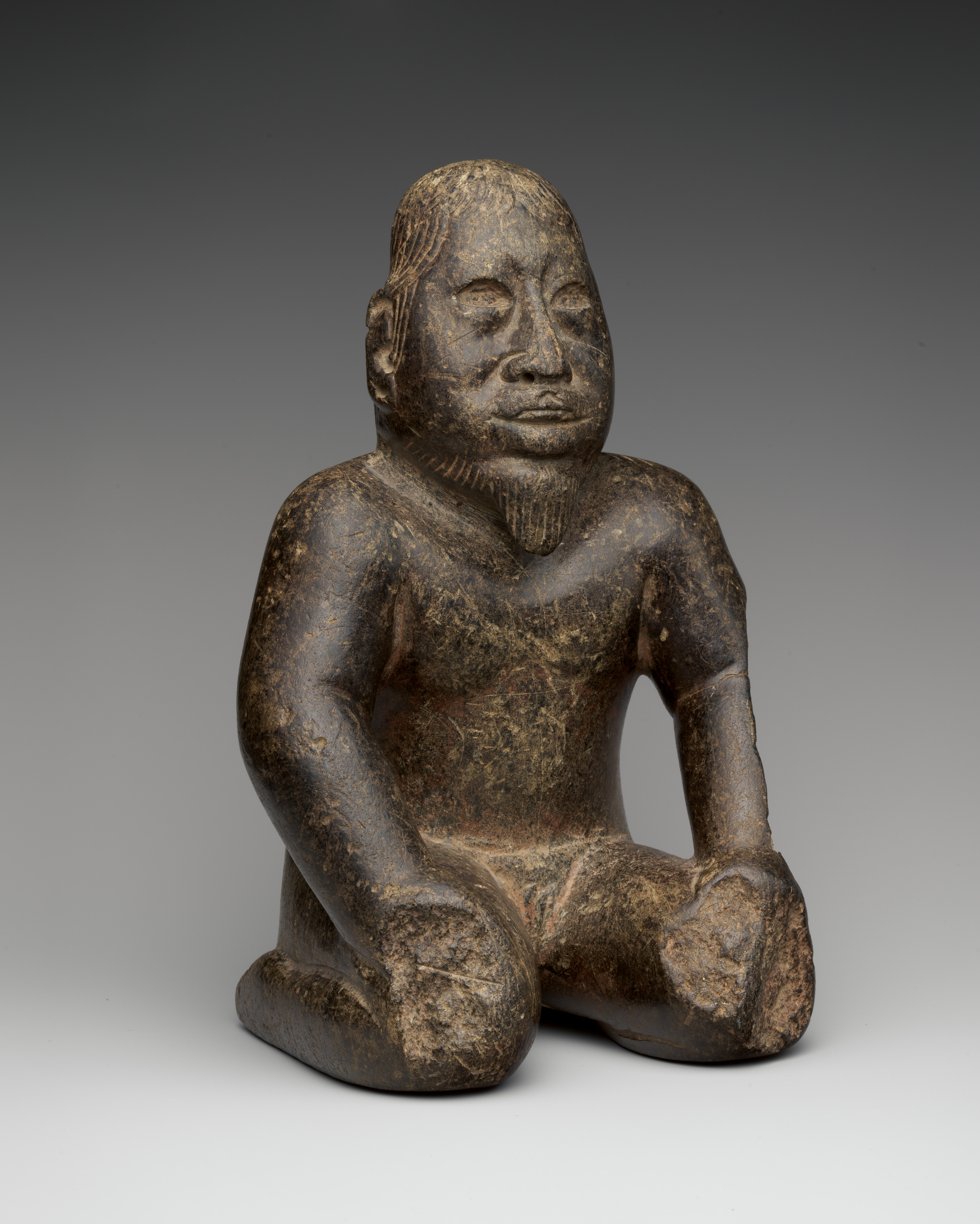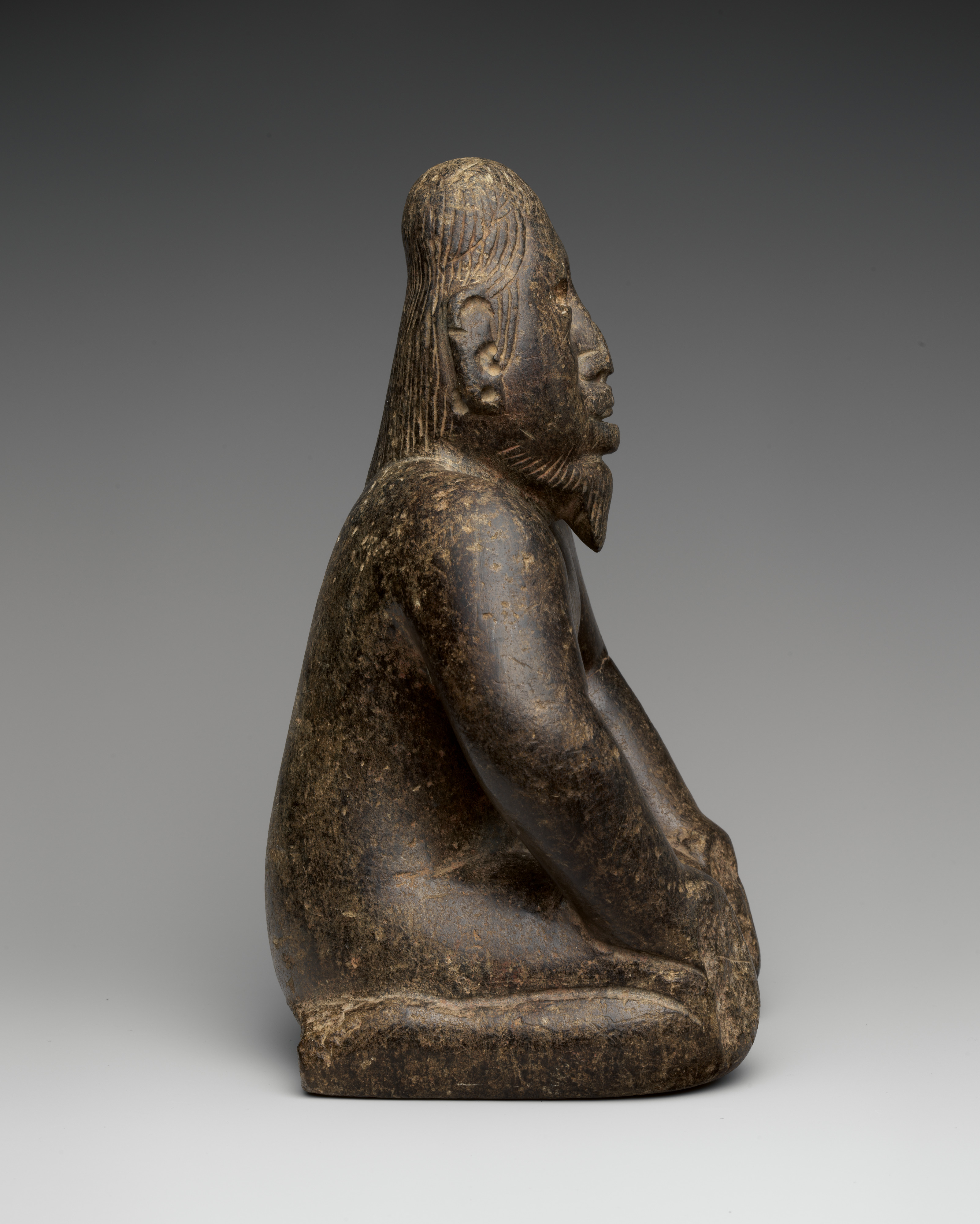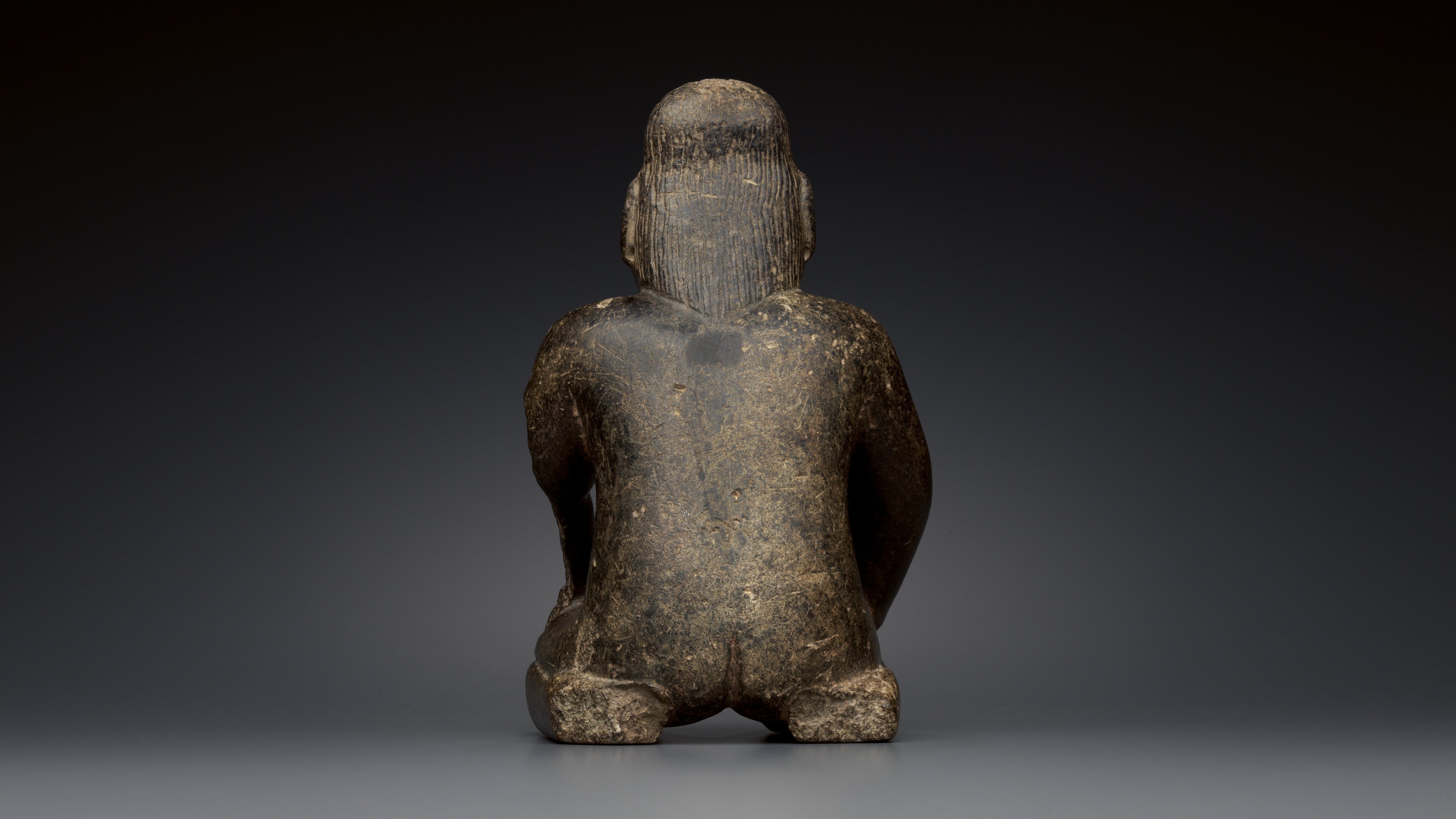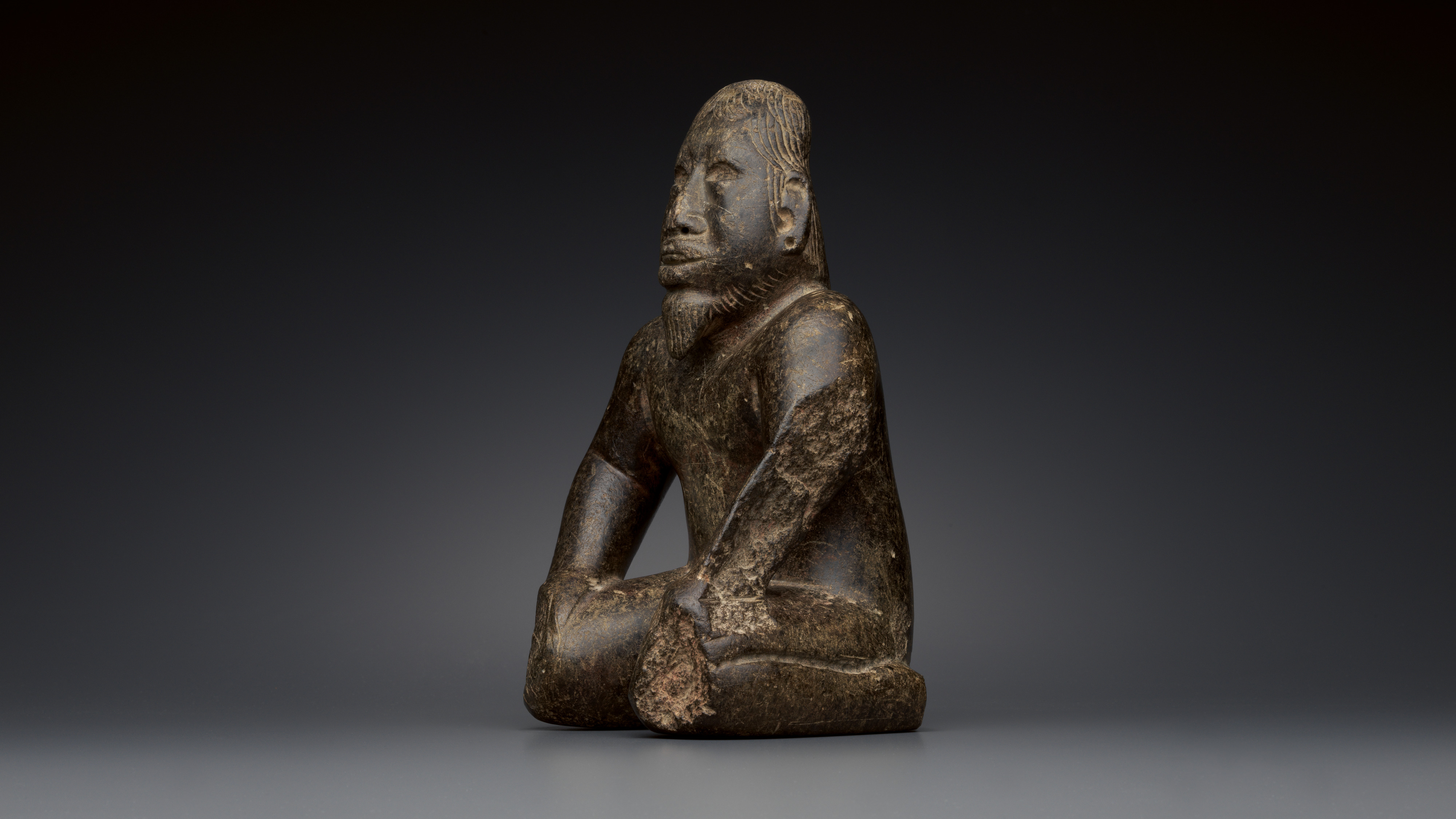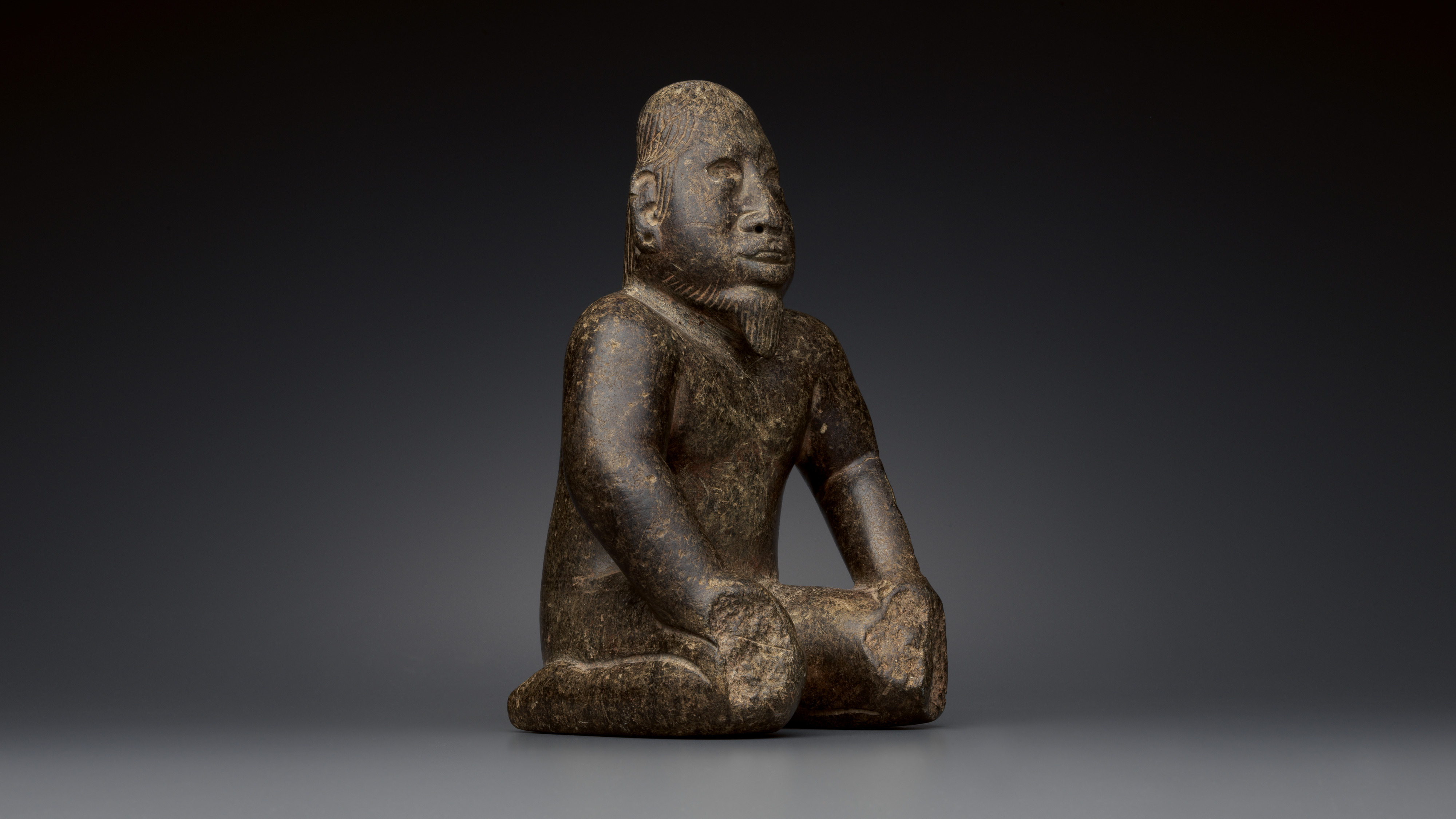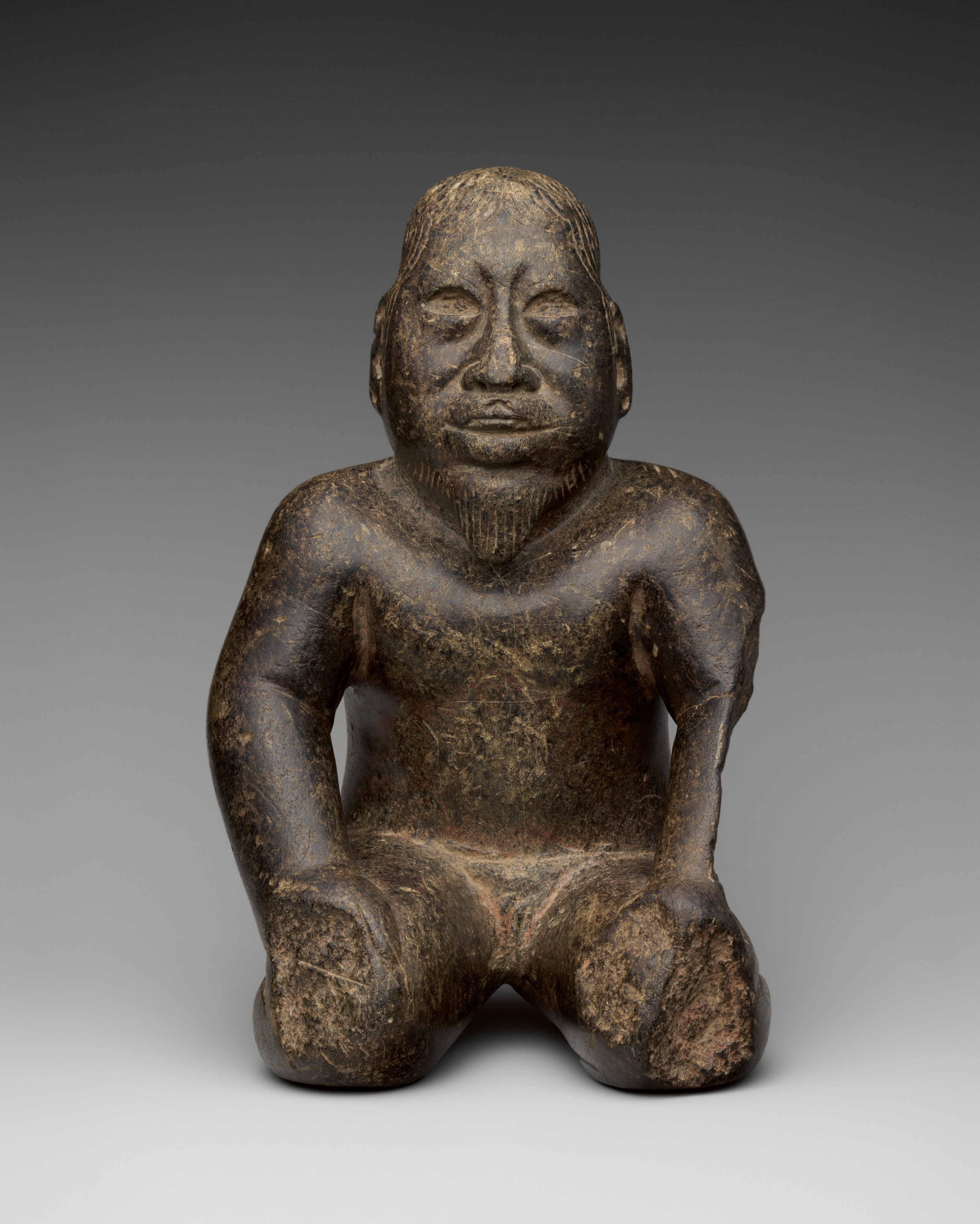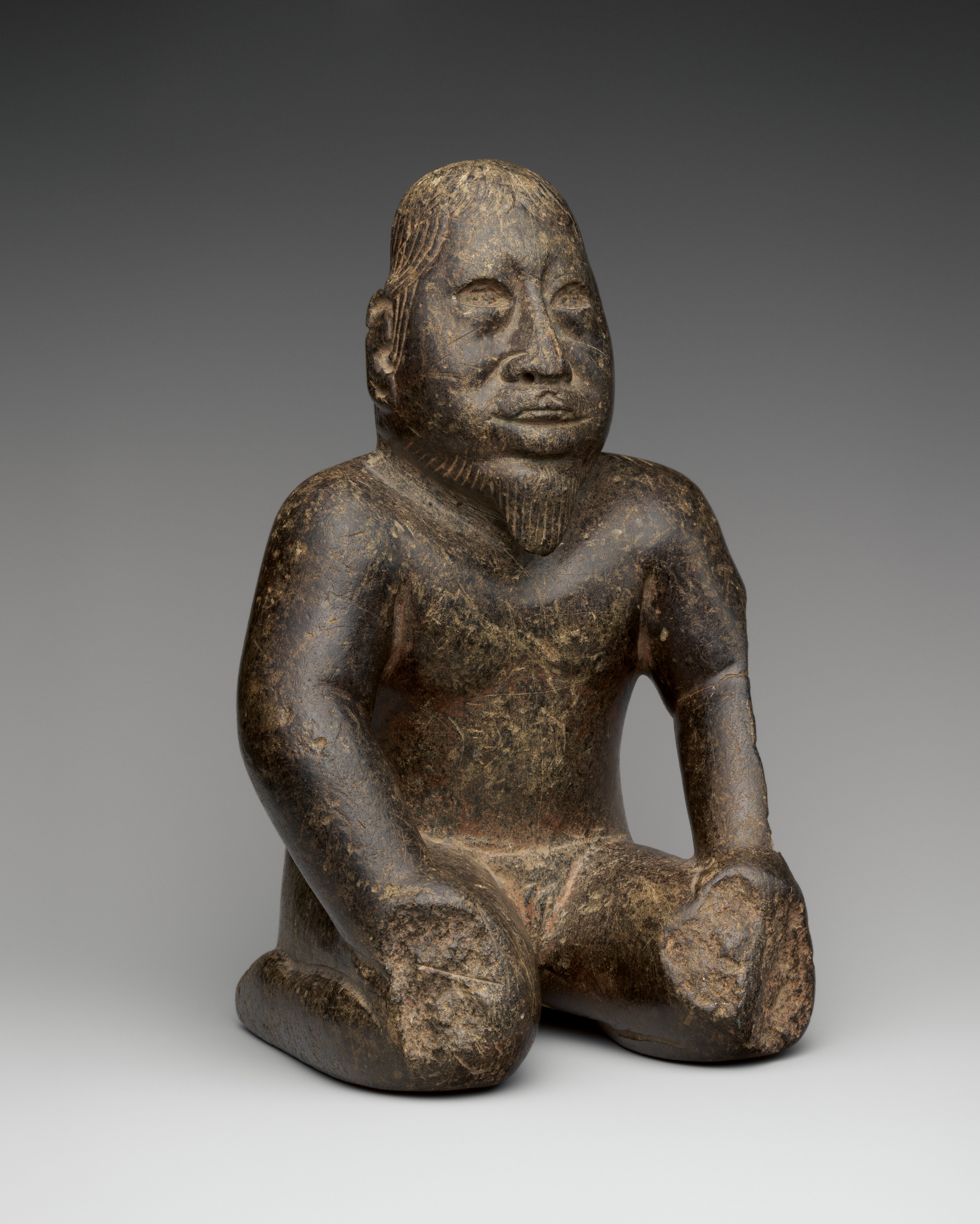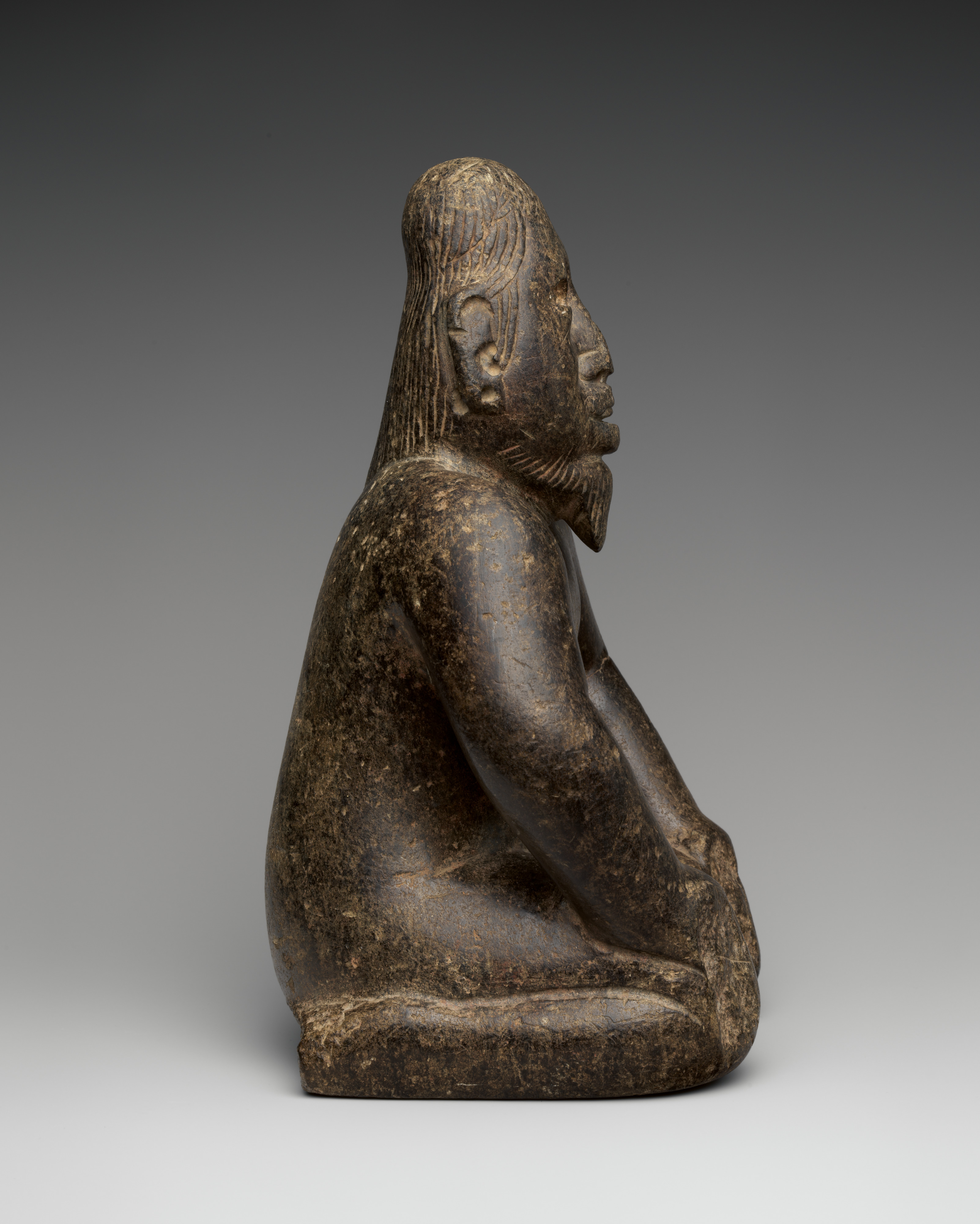Kneeling bearded figure
Depicting a kneeling figure, this intimately scaled sculpture is notable for its harmonious proportions, subtle musculature, and dynamic pose. The bearded man rests his hands on his knees, wearing a loincloth but otherwise unadorned. As is characteristic of Olmec-period sculpture, the head is elongated, perhaps a representation of cranial modification, a cultural practice where the head of an infant is gently shaped. The deeply carved eyes may have once held inlays of shell or stone, and details of the coiffure, ears, and beard are delicately incised. The hands and feet were broken off in antiquity and the left arm has also suffered losses.
This stately portrait of an Olmec-period ruler was reportedly found in Puebla, away from the Gulf Coast homeland, just as other Olmec-style art in ceramic. Perhaps a portrait of a ruler, the sculpture carved from dark greenish-gray serpentine belongs to an important class of works that show kneeling males in various states of transformation into, or impersonation of, powerful feline deities.
Further Reading
American Federation of Arts. Exotic Art from Ancient and Primitive Civilizations: A Selection from the Collection of Jay C. Leff. New York: American Federation of Arts, 1961, no. 43.
Benson, Elizabeth P., and Beatriz de la Fuente, eds. Olmec art of ancient Mexico. Washington, DC: National Gallery of Art, 1996, no 57, pp. 226–27.
Berrin, Kathleen, and Virginia M. Fields, eds. Olmec: Colossal Masterworks of Ancient Mexico. San Francisco: Fine Arts Museums of San Francisco, 2010.
Biro, Yaëlle, James Doyle, Alisa LaGamma, Maia Nuku, and Joanne Pillsbury. Recent Acquisitions--A Selection: 2016–2018. The Metropolitan Museum of Art Bulletin (Fall 2018), p. 7.
Cheetham, David, and Jeffrey P. Blomster, eds. The Early Olmec and Mesoamerica: The Material Record. Cambridge: Cambridge University Press, 2017.
Clark, John E., and Michael Blake El origen de la civilización en Mesoamérica: Los Olmecas y Mokaya del Soconusco de Chiapas, Mexico. In El Preclásico o Formativo: Avances y perspectivas, Martha Carmona Macias, ed. Museo Nacional de Antropología, México City, 1989, pp. 385–403.
Clark, John E., and Michael Blake The Power of Prestige: Competitive Generosity and the Emergence of Rank Societies in Lowland Mesoamerica. In Factional Competition and Political Development in the New World, Elizabeth M. Brumfiel and John W. Fox, eds., Cambridge: Cambridge University Press, 1994, pp: 17– 30.
Clark, John E., and Mary Pye, eds. 2000 Olmec Art and Archaeology: Social Complexity in the Formative Period. Washington, D.C.: National Gallery of Art.
Coe, Michael D. The Jaguar’s Children: Pre-Classic Central Mexico. New York: Museum of Primitive Art, 1965.
Coe, Michael D. The Olmec Style and Its Distributions. In Handbook of Middle American Indians, vol. 3 (Robert Wauchope, gen. ed.). Austin: University of Texas Press, 1965, pp. 739–775
Coe, Michael D. (ed.) The Olmec World: Ritual and Rulership. Princeton, NJ: Princeton University Art Museum, 1996, no. 12, p. 142.
Coe, Michael D., and Richard A. Diehl 1980 In the Land of the Olmec: The Archaeology of San Lorenzo Tenochtitlán, 2 vols. Austin: University of Texas Press.
Covarrubias, Miguel Origen y desarrollo del estilo artístico “Olmeca.” In Mayas y Olmecas: Segunda reunión de Mesa Redonda sobre problemas antropológicos de México y Centro América. Mexico City: Talleres, 1942, pp. 46-49.
Cyphers Guillén, Ann From Stone to Symbols: Olmec Art in Social Context at San Lorenzo Tenochtitlán. In Social Patterns in Pre-Classic Mesoamerica (David C. Grove and Rosemary A. Joyce, eds.), Washington, D.C.: Dumbarton Oaks, 1999, pp. 155–181.
Drucker, Philip La Venta, Tabasco: A Study of Olmec Ceramics and Art. Smithsonian Institution, Bureau of American Ethnology, Bulletin 153. Washington, D.C.: Government Printing Office, 1952.
Drucker, Philip, Robert F. Heizer, And Robert J. Squier 1959 Excavations at La Venta, Tabasco, 1955. Smithsonian Institution, Bureau of American Ethnology, Bulletin 170. Washington, D.C.: Government Printing Office, 1959.
Easby, Elizabeth Kennedy. Ancient Art of Latin America From the Collection of Jay C. Leff. New York: Brooklyn Museum, 1967, no. 3.
Easby, Elizabeth Kennedy, and John F. Scott Before Cortés: Sculpture of Middle America. New York: Metropolitan Museum of Art, 1970.
Fairservis, Walter A. Exotic Art from Ancient and Primitive Civilizations: Collection of Jay C. Leff. Pittsburgh: Carnegie Institute, Department of Fine Arts, 1959, no. 341.
Feuchtwanger, Franz Ceramica olmeca. Mexico City: Editorial Patria, 1989.
Grove, David C. Olmec: What’s in a Name? In Regional Perspectives on the Olmec (Robert J. Sharer and David C. Grove, eds.): Cambridge: Cambridge University Press, 1989, pp. 8-14.
Joralemon, Peter David A Study of Olmec Iconography. Studies in Pre-Columbian Art and Archaeology 7. Washington, D.C.: Dumbarton Oaks, 1971.
Linduff, Katheryn M. Ancient Art of Middle America: Selections from the Jay C. Leff Collection. Huntington, WV: Huntington Galleries, 1974, pl. 9.
Magaloni Kerpel, Diana, and Laura Filloy Nadal La Ofrende 4 de La Venta: un tesoro olmeca reunido en el Museo Nacional de Antropología. Mexico City: Instituto Nacional de Antropología e Historia, 2013.
Michelet, Dominique, Cora Falero Ruiz, and Steve Bourget Les Olmèques et les cultures du golfe du Mexique. Paris: Skira, 2020.
Pool, Christopher A. Olmec Archaeology and Early Mesoamerica. New York: Cambridge University Press, 2007.
Pre-Columbian Art of Mesoamerica From the Collection of Jay C. Leff. Allentown, PA: Allentown Art Museum, 1972, no. 2.
Reilly, F. Kent, III. "The Shaman in Transformation Pose." Record of The Art Museum vol. 48, no. 2 (1989), pp. 4–21, fig. 15a.
Taube, Karl A. Olmec Art at Dumbarton Oaks. Washington, D.C.: Dumbarton Oaks, 2004.
von Winning, Hasso. Pre-Columbian Art of Mexico and Central America. New York: Abrams, 1968, fig. 49.
This image cannot be enlarged, viewed at full screen, or downloaded.
This artwork is meant to be viewed from right to left. Scroll left to view more.


